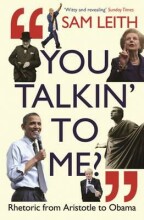Rhetoric Then and Now
11 important questions on Rhetoric Then and Now
What is the central complaint against rhetoric since Socrates?
That it gives the plausible ignoramus or the self-interested dissembler - the knave or the fool - power over the good and the wise.
Who was the Newton of rhetoric?
Aristotle:
- he identified the three branches of oratory 1) deliberative 2) judicial and 3) epideictic
- and the three persuasive appeals 1) ethos 2) pathos 3) logos
- "probably this so likely that"
- not knowledge but persuasion
- rhetoric = practical skill (teachable)
What is the highest rhetorical accomplishment according to Aristotle?
an expression of arete / virtue
a theory of human nature / study of humanity in itself.
- Higher grades + faster learning
- Never study anything twice
- 100% sure, 100% understanding
Name two key influences on the way rhetoric developed
- Christianity
- the written word
What are the liberal arts?
- grammar
- logic
- rhetoric
those together forming the trivium; relating to the mind
and
- arithmetic
- geometry
- music
- astronomy
those together forming the quadrivium; relating to the matter
How did sister Miriam Joseph categorize the relation of the trivial arts?
- logic is concerned with the thing-as-it-is-known
- grammar is concerned with the thing-as-it-is-symbolised
- rhetoric is concerned with the thing-as-it-is-communicated (the master art of the trivium)
Why did the art of rhetoric overlap the arts of drama and poetry in the Renaissance?
Not only because of their formal congruences in terms of rhythm, sound effects, metaphor etc but because those seeking to put language at the service of power were courtiers of an absolute monarch rather than citizens of an Athenian democracy. Poetry and drama were deeply involved in networks of patronage: praise poems, sucky-up dedications scurrilous broadsides and vicious flytings of one's rivals.
What is Puttenham remembered for?
of domesticating the figures and tropes of classical oratory by giving them English names and English examples:
Alliteration "Like Letter"
Synecdoche "Quicke Conceit"
Erotema "The Questioner"
Zeugma "Single Supply"
Hyperbole "Loud Lyer" or "The Overreacher"
Antiphrasis "The Broad Floute"
Mycterismus "The Fleering Frumpe"
Epizeuxis "The Underlay"
How many handbooks on rhetoric were published between 1400-1700?
2000
Why was the study of rhetoric pushed aside in 19th + 20th C?
- It was associated with the classics, which in 20thC were themselves disappearing from curricula.
- More modern, more scientific-seeming disciplines such as linguistics, psychology and literary criticism became more important
Why has rhetoric generally been a boys' game?
- Men were most likely to be in the jobs that gave occasion for speeches
- Men were the ones educated to give speeches
- Men were the ones whose speeches were most likely to be written down
The question on the page originate from the summary of the following study material:
- A unique study and practice tool
- Never study anything twice again
- Get the grades you hope for
- 100% sure, 100% understanding




























